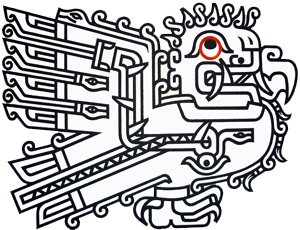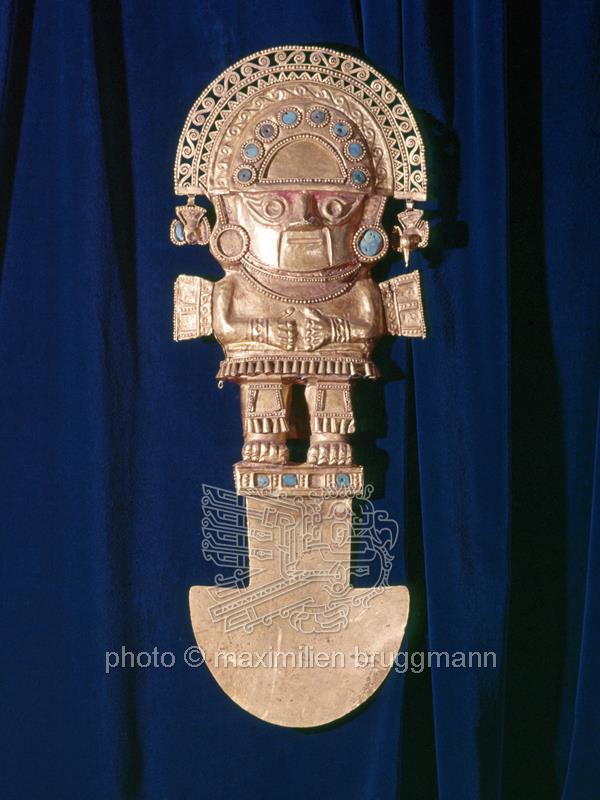Description
The golden tumi of Íllimo was a knife or ceremonial axe of the Lambayeque culture (8th to 14th centuries), although it was long wrongly attributed to the Chimú culture. It was made of embossed gold leaf and inlaid with semi-precious stones. Its blade had a semi-circular shape and its handle was an elaborate representation of a deity, probably the mythical Naylamp mentioned in Spanish chronicles. It is the most famous example of old Peruvian goldsmithing. It was stolen from the Museum of Anthropology and Archaeology in Lima in 1981. The valuable stolen piece had the following dimensions: Total length 43.5 cm; length of the figure of the god 29 cm; length of the knife in the shape of a half-moon 14.5 cm; maximum width 15.5 cm. The weight was 1 kilogram. - 1977





